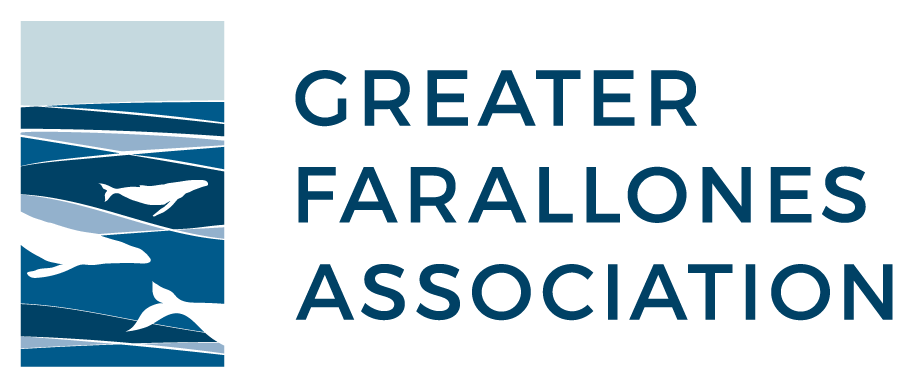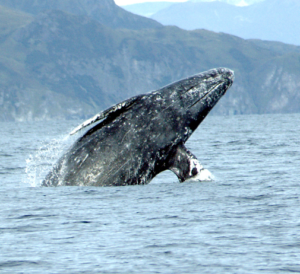Gray Whales Migrate South
January 2018
Gray Whales (Eschrichtius robustus) complete one of the longest annual migrations of any mammal, traveling about 5,000 miles from northern summer feeding grounds to winter calving areas in warmer water. Each year on their journey, the Eastern North Pacific population of Gray Whales passes through the Greater Farallones Sanctuary National Marine Sanctuary on its way south, giving us all an opportunity to catch a glimpse of these charismatic marine mammals.
Where to Catch a Glimpse
Since Gray Whales migrate close to shore, they can be easy to spot from land. For a chance to see them, you might try one of the following northern California locations. Don’t forget your binoculars for a close up view!
Point Reyes National Seashore
The Point Reyes Lighthouse and surrounding cliffs are a great place to watch for whales.
Gray Whale Cove State Beach
Gray Whales can often be spotted near the shore of this scenic Half Moon Bay beach.
Bodega Head State Marine Conservation Area
Try the Ocean Overlook at Bodega Head to view the migration.
Point Lobos State Reserve
If you are in the Monterey, California area, this Reserve offers the ideal place for whale sightings, as well as the chance to see harbor seals, elephant seals, sea lions, and sea otters.
Monitoring Gray Whales with Beach Watch
The Greater Farallones Association helps to monitor marine mammals through citizen science programs like Beach Watch. As part of Beach Watch monitoring, volunteers conduct surveys of various organisms including Gray Whales along the Sanctuary coast.
The Beach Watch ecosystem monitoring program is a partnership of the Greater Farallones Association and NOAA’s Greater Farallones National Marine Sanctuary to study and protect the habitat and organisms of the Marine Sanctuary. Since 1993, citizen scientists have regularly monitored Sanctuary beaches documenting wildlife sightings, as well as oil spills and seasonal changes.
Learn more about whale monitoring in the Sanctuary from the Sanctuary Integrated Monitoring Network (SIMoN).


